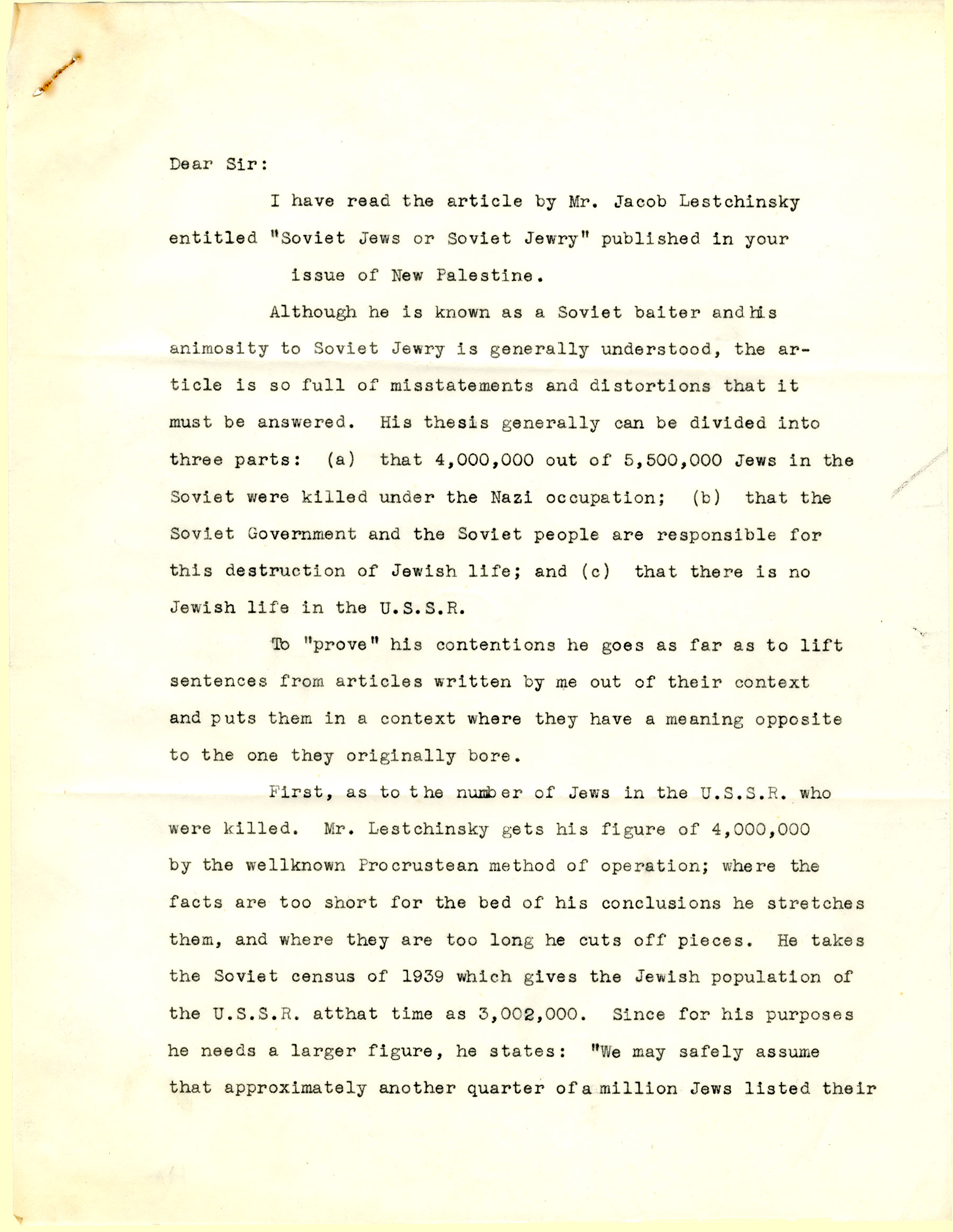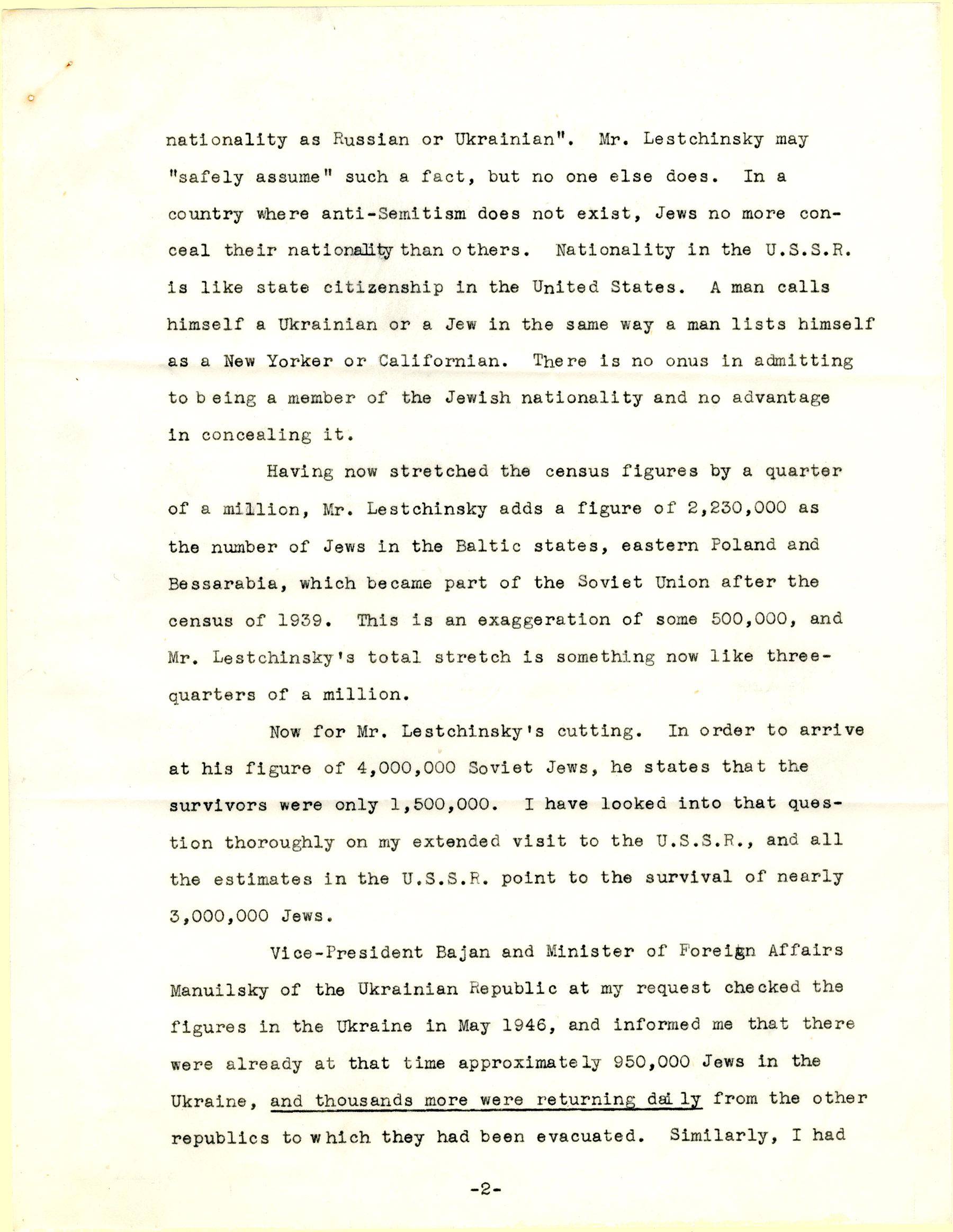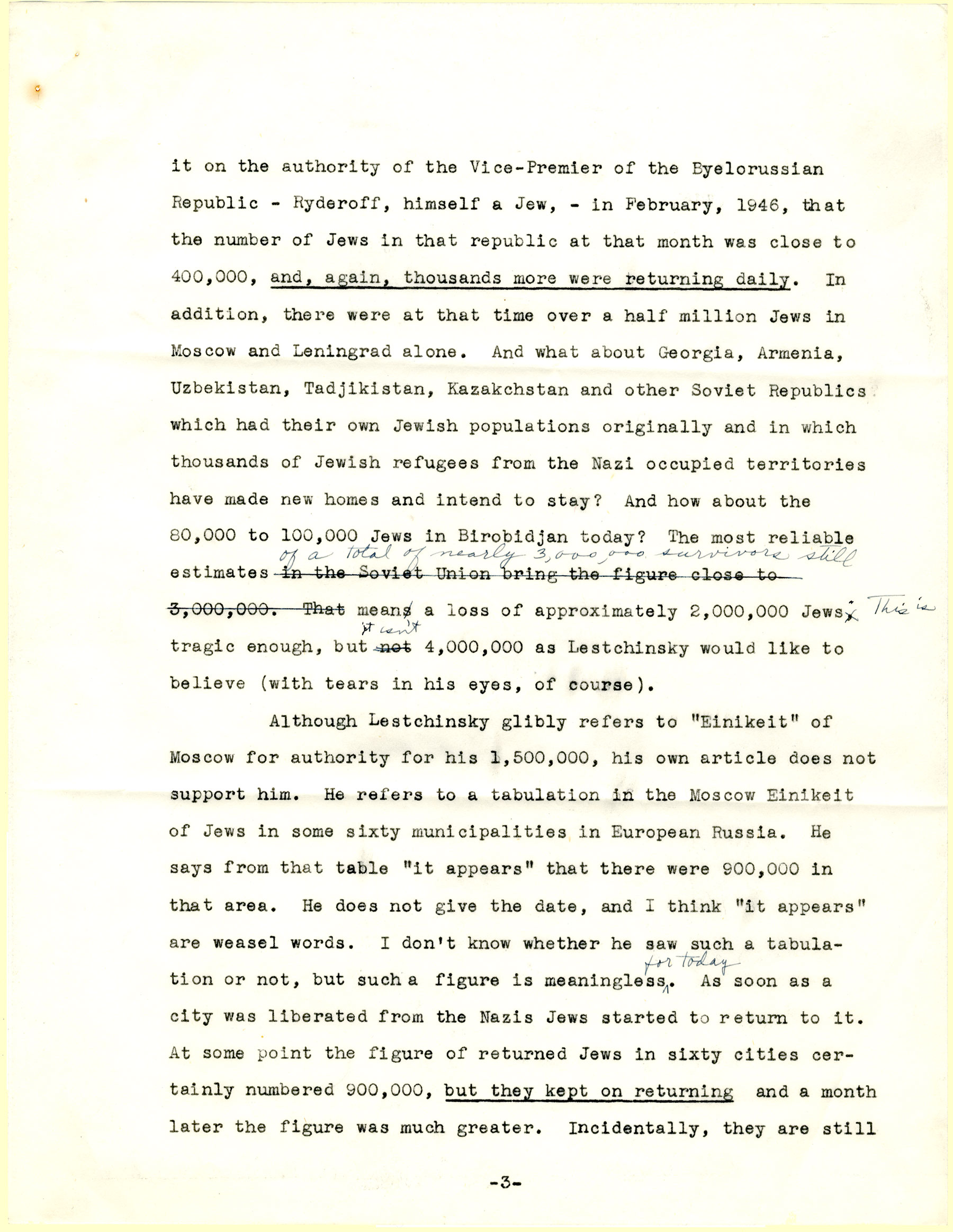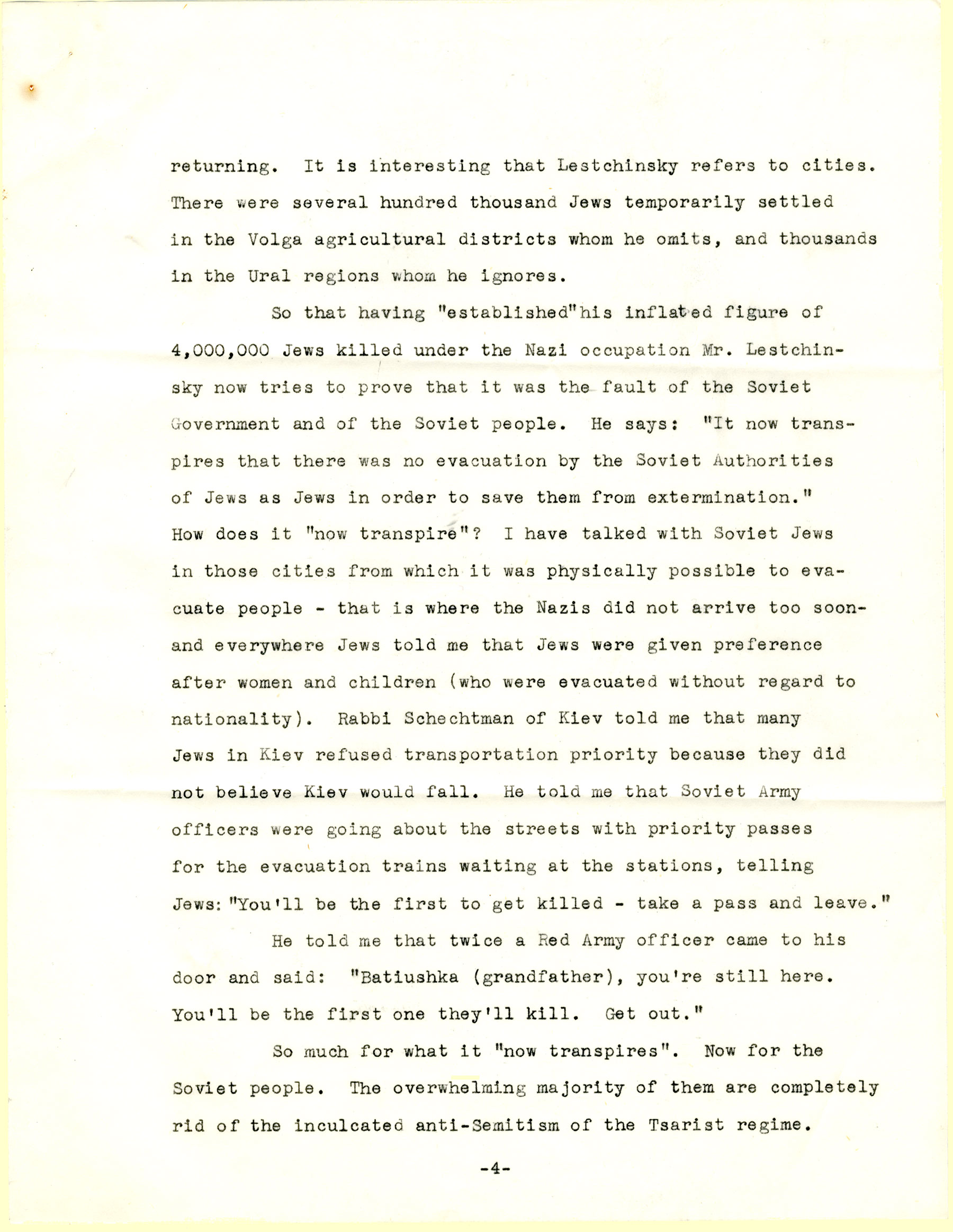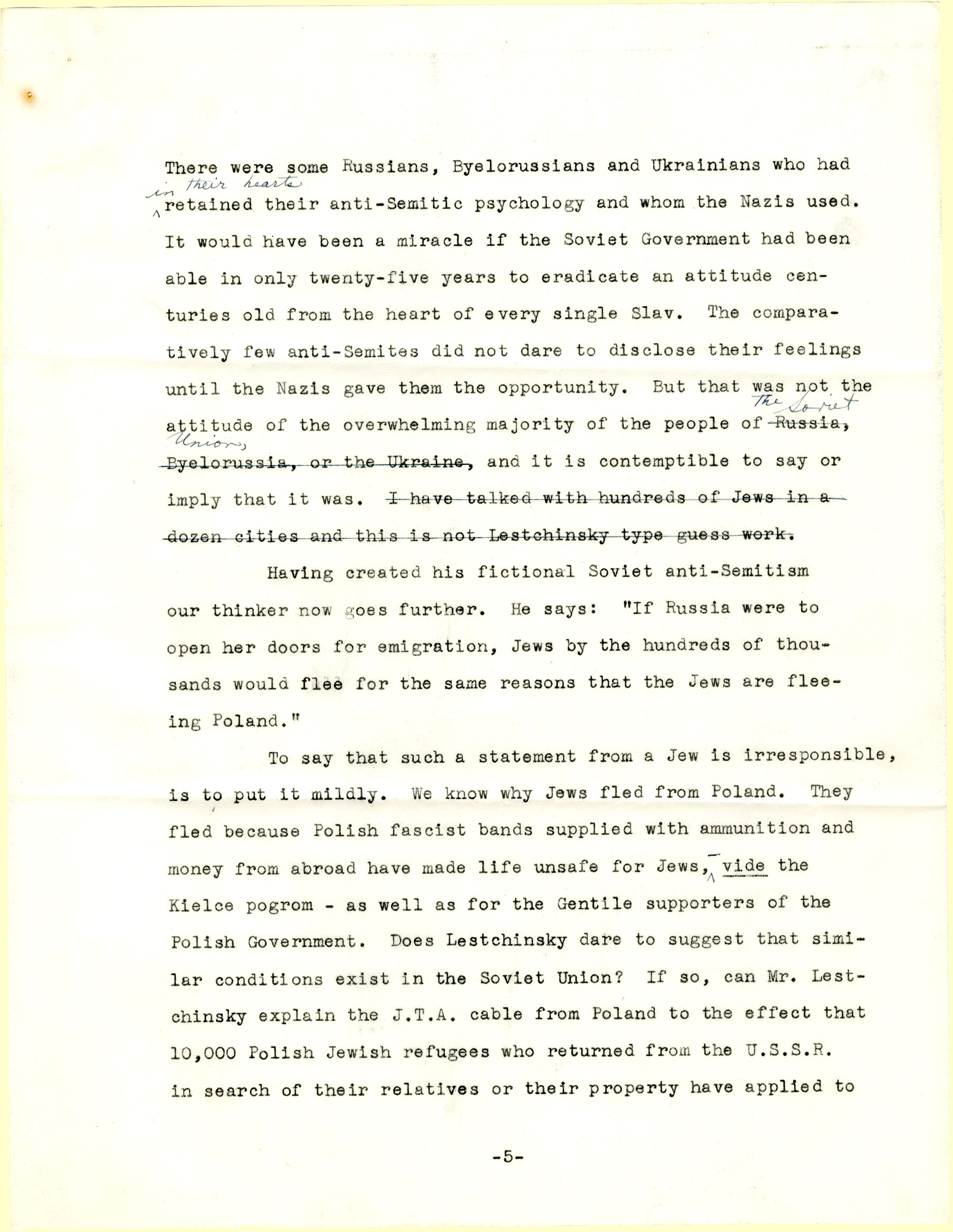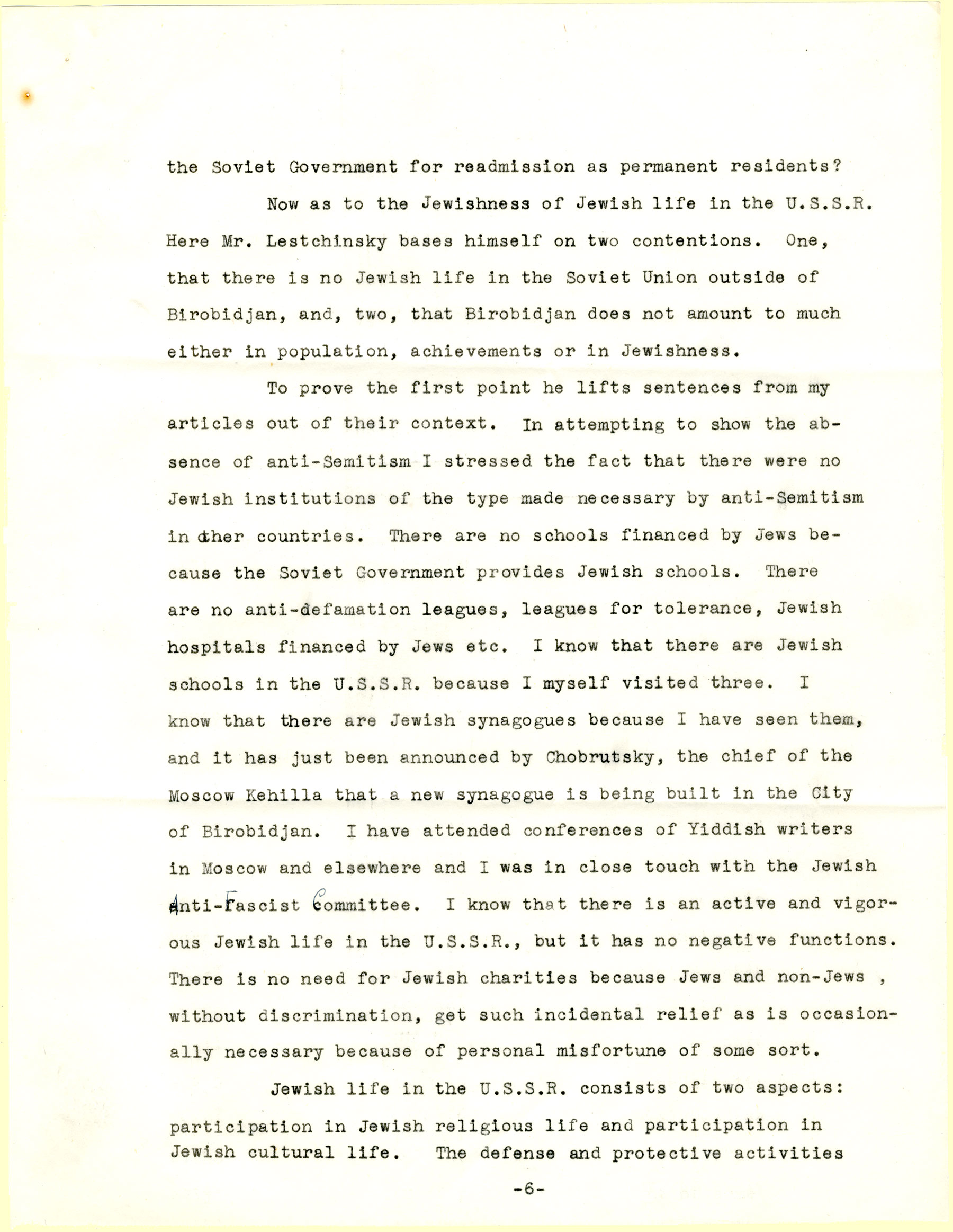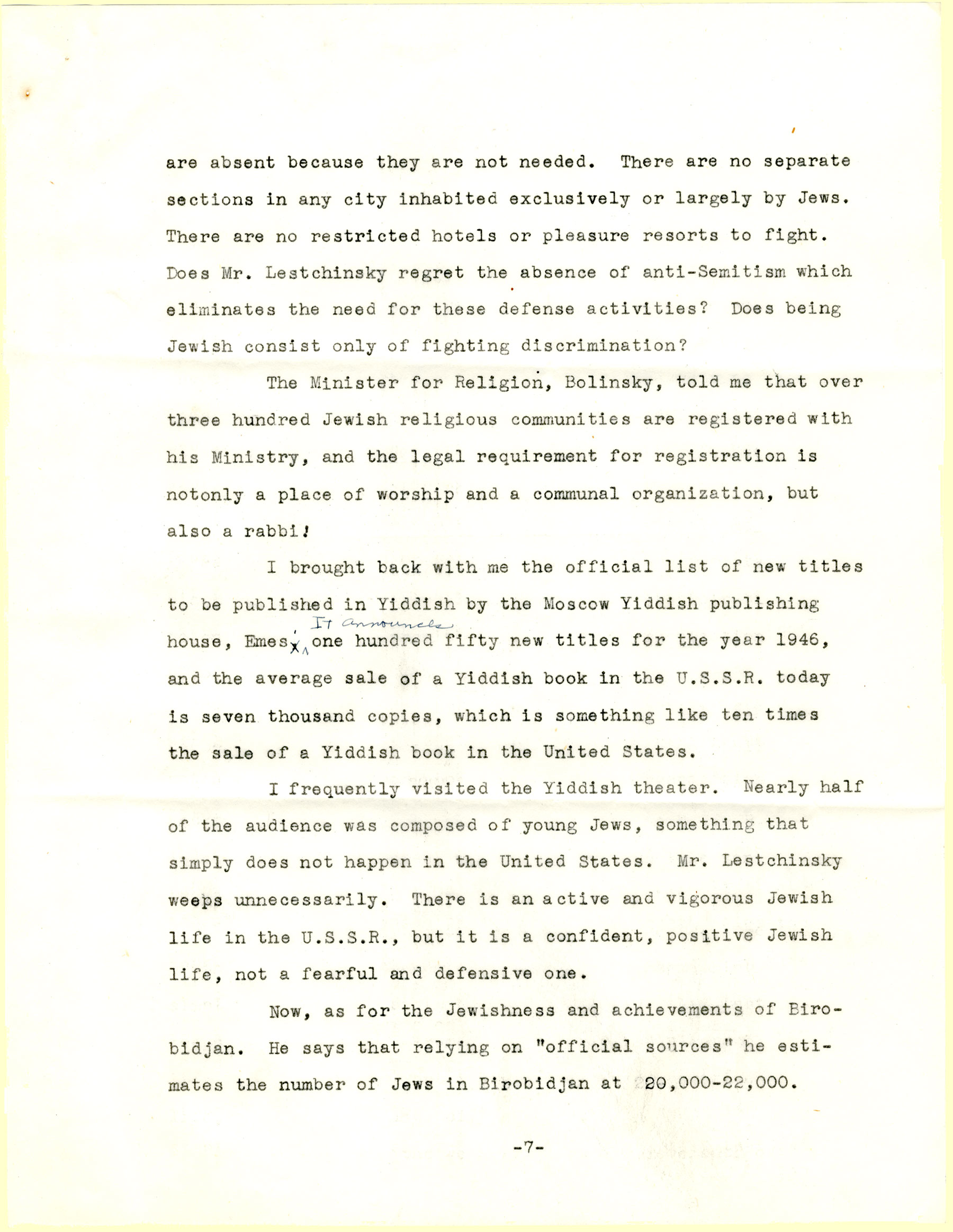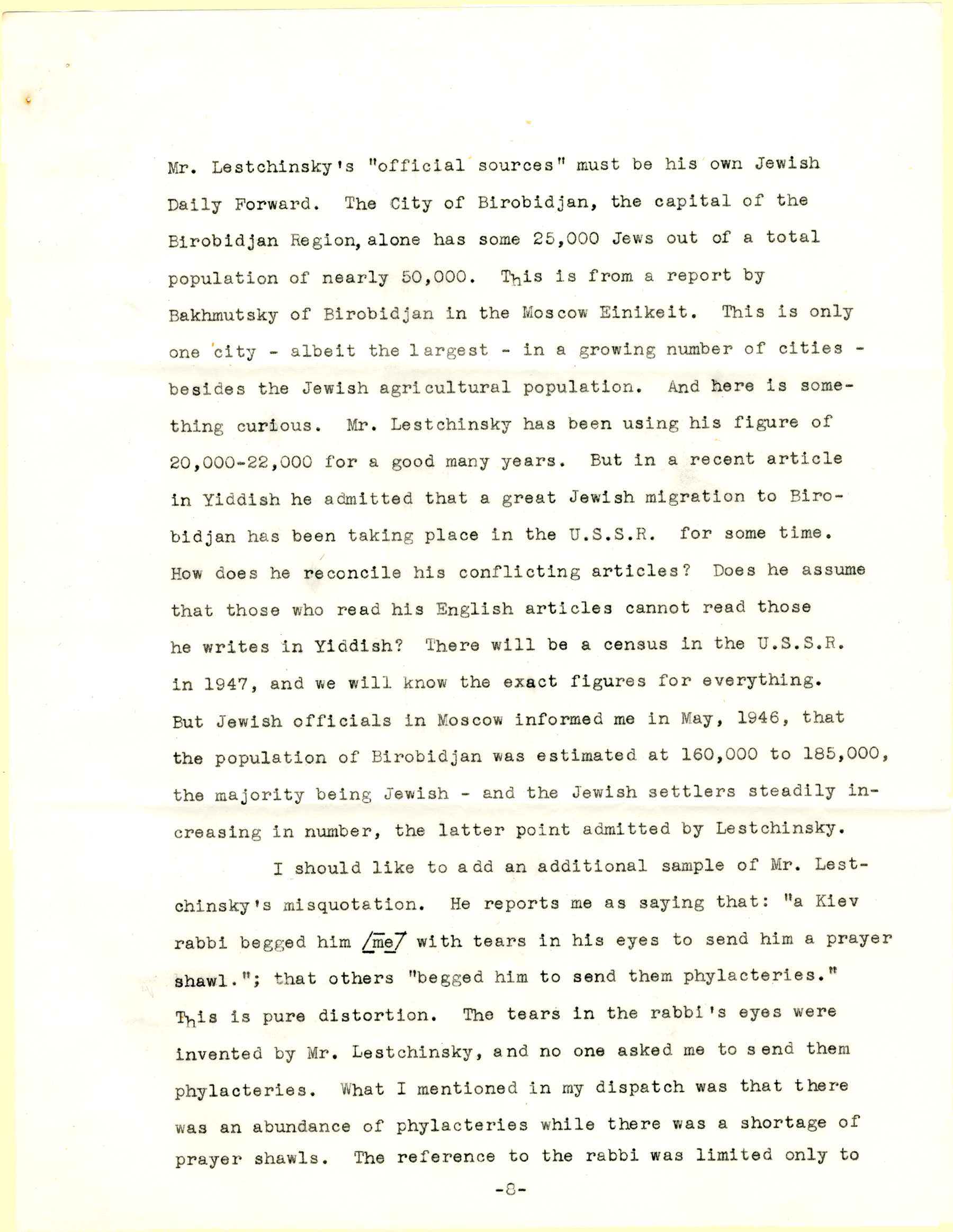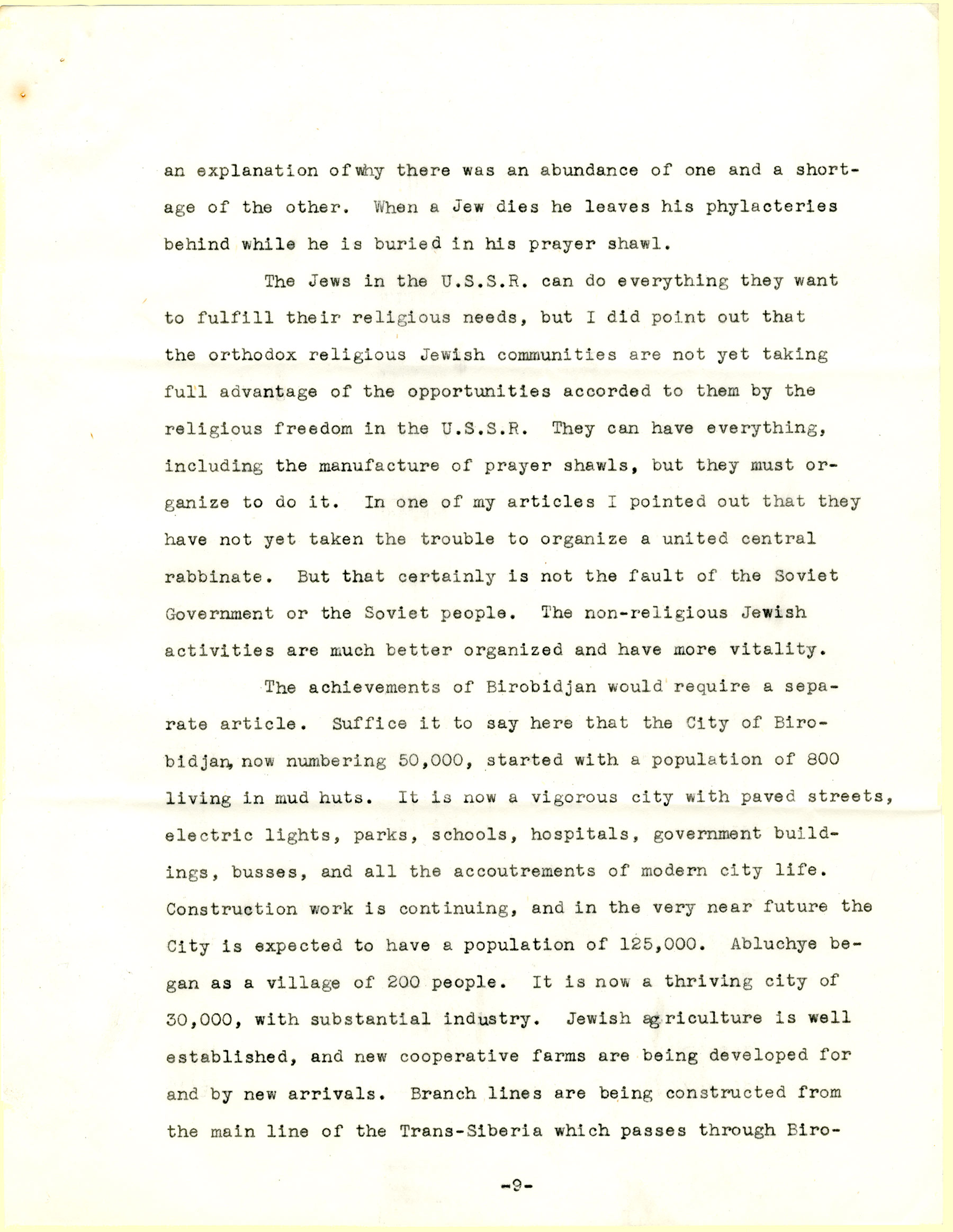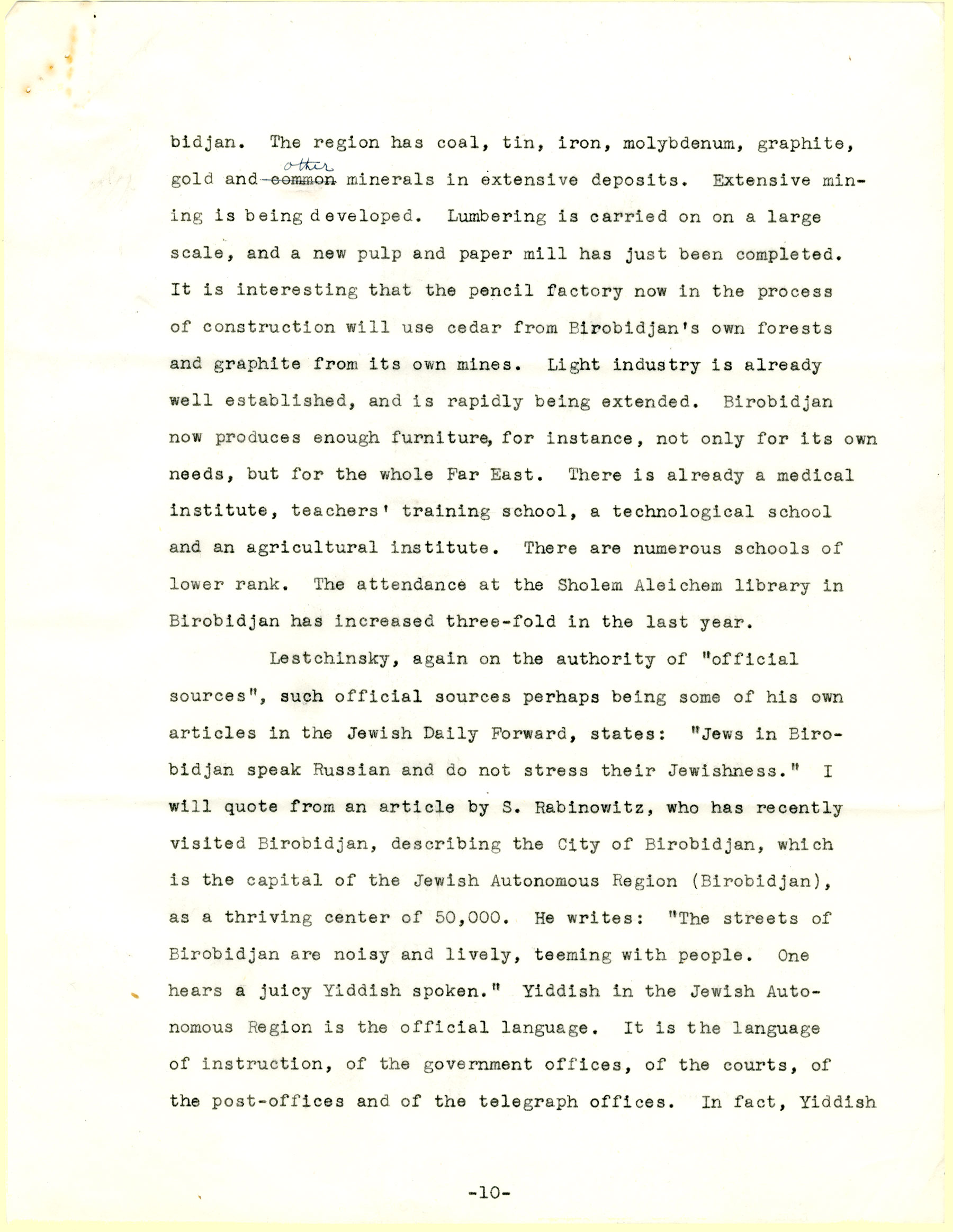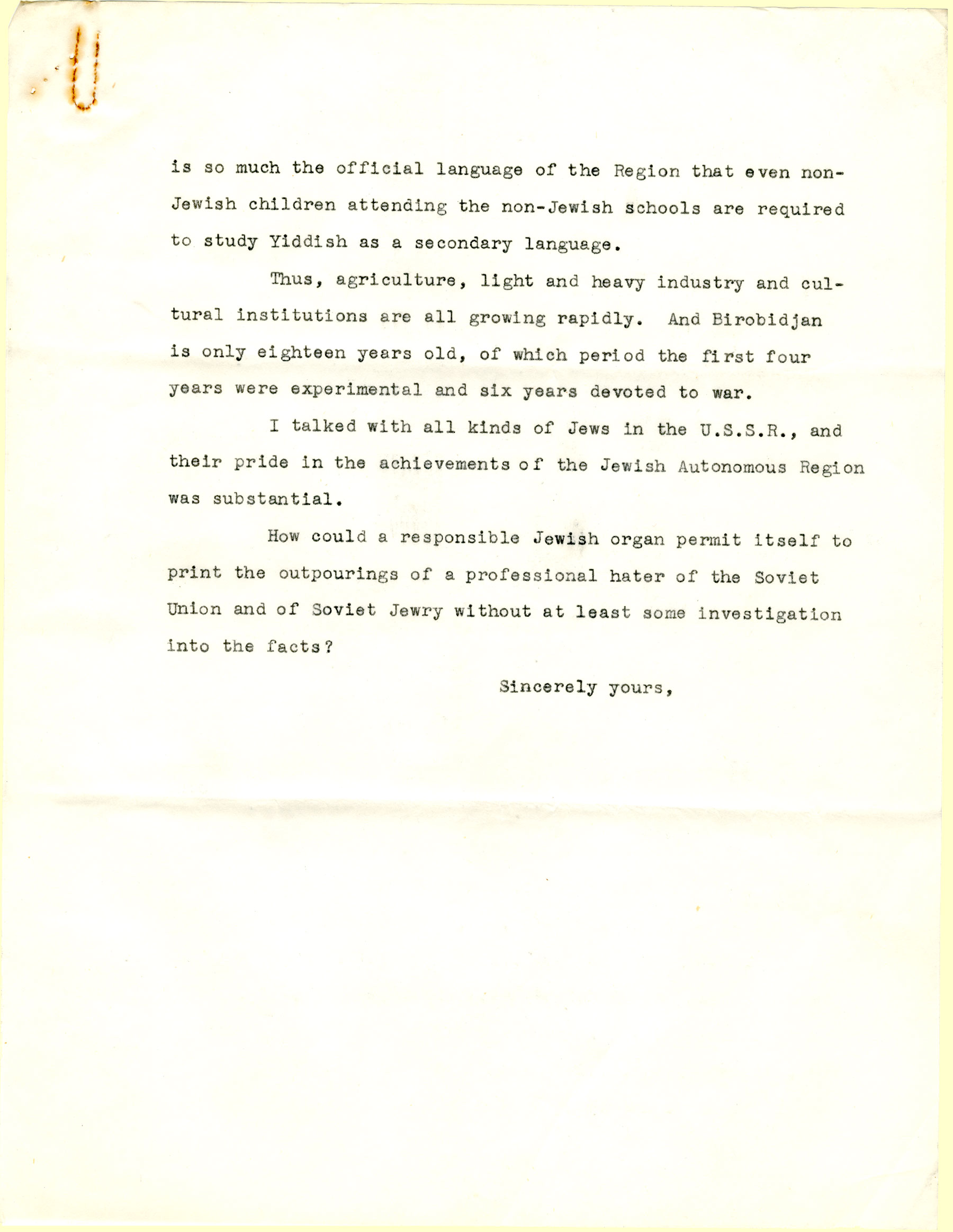In this 11-page undated draft letter by journalist B.Z. Goldberg to the editor of The New Palestine, we have a glimpse into a broader ideological clash
Goldberg's letter also offers insight into the highly politicized nature of "counting Jews" in both life and death. In dismissing Lestschinsky as a "weeper," Goldberg's rhetoric closely parallels that of Soviet Jewish demographers in the early 1930s who mocked Lestschinsky for allegedly inflating the number of anti-Jewish pogrom casualties during the Russian Civil War. In challenging Lestschinsky's arithmetic, Goldberg contests the pessimism underlying prevailing conceptions of Jewish identity: "Does being Jewish consist only of fighting discrimination?" he queries. His answer: "There is an active and vigorous Jewish life in the USSR, but it is a confident, positive Jewish life, not a fearful and defensive one." Events transpiring between 1948 and 1953
